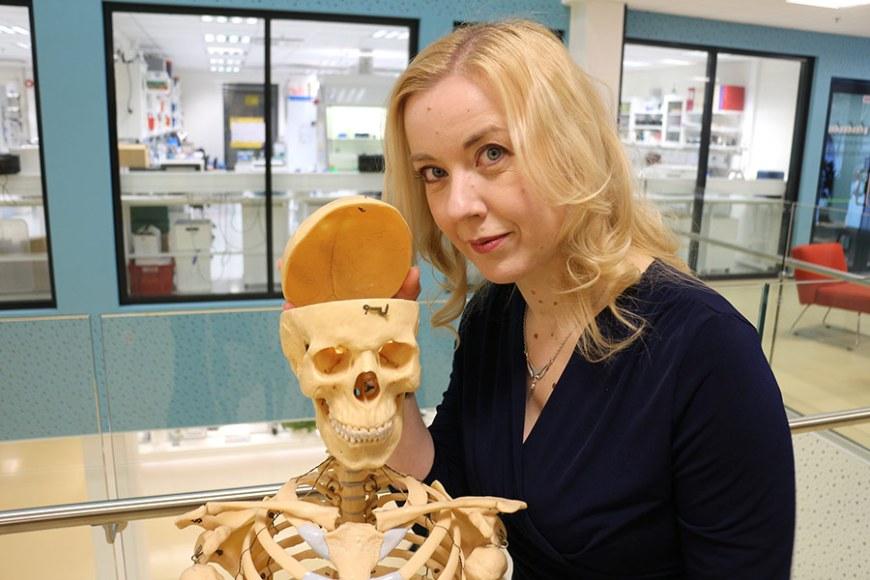Artificial intelligence boosts next-generation ultrafast photonics

An international group of scientists published this week in the prestigious journal Nature Photonics a review article that provides a comprehensive overview of how machine learning and associated methods can be applied to both improve developments in next-generation laser sources, and revolutionize applications where ultrafast light plays a central role.
The laser has been one of the defining inventions of the 20th century. It has not only created an entirely new field of research and science, but has also led to the development of light sources producing powerful and ultrashort pulses that are used in many areas of our everyday life such as medical treatments, biological imaging, communications, industrial manufacturing or entertainments.
“Perhaps surprisingly, however, ultrafast lasers are largely designed and operated using techniques that have not much evolved from when they were first developed decades ago. This naturally has led to performance tradeoffs and limitations for emerging applications with ever more demanding specifications which often require light with precisely tailored characteristics”, explains Goëry Genty, Professor in Ultrafast Photonics at Tampere University and the Director of Academy of Finland Flagship on Photonics Research and Innovation (PREIN).
A novel avenue to overcome this bottleneck has recently appeared by combining the latest advances in ultrafast photonics with the powerful tools of artificial intelligence and machine learning. Artificial intelligence is now ubiquitous in many areas of science and engineering and commonly employed in many applications from text and speech recognition to healthcare, transport, manufacturing, and advertisement.
“Because it has been unclear how it can best be used to drive future research, the application of artificial intelligence and machine learning to ultrafast photonics for the control of complex laser systems and the generation of customized light has yet to reach its full potential. Our team of international collaborators has now tackled this problem and summarized the different machine learning approaches that can be applied to the study and control of ultrafast photonics systems”, states Genty.
A unique feature of the review is a series of tutorial elements specifically targeted to non-specialists and students.
“Our goal is to make the review accessible to readers who are not experts in the field and provide them with the basics of machine learning for ultrafast photonics applications. The review is essentially divided into two sections on laser design and optimization on one hand, and the study and control of ultrafast dynamics on the other hand. For each case, we have tried to explain how the techniques of machine learning may be applied in practical cases of interests, the benefit they can bring and future research directions. We have also included tutorial elements on the different algorithms used in machine learning as well as some general guidelines on how to use them, which should allow researchers not particularly familiar with machine learning to have a quick start”, explains professor Genty.
Professor Goëry Genty and the other authors of the article are well-known pioneers in diverse fields of nonlinear dynamics and ultrafast optics. They aim at providing a roadmap for future research.
“We believe that machine learning can play an important role in the next generation of laser sources. By making it accessible to a wide audience, our work can stimulate researchers to exploit the full potential of artificial intelligence for ultrafast photonics and its many applications”, adds Goëry Genty.
Read the article in Nature Photonics.
Machine learning and applications in ultrafast photonics, Goëry Genty1, Lauri Salmela1, John M. Dudley2, Daniel Brunner2, Alexey Kokhanovskiy3, Sergei Kobtsev3, and Sergei K. Turitsyn.3,4 Nature Photonics (2020) DOI 10.1038/s41566-020-00716-4
1. Laboratory of Photonics, Tampere University, Tampere, Finland.
2. Institut FEMTO-ST, Université Bourgogne Franche-Comté CNRS UMR 6174, Besançon, France.
3. Division of Laser Physics & Innovative Technologies, Novosibirsk State University, Novosibirsk, Russia.
4. Aston Institute of Photonic Technologies, Aston University, Birmingham, UK
Goery Genty
Professor, Director of Flagship for Photonics Research and Innovation Goery Genty
Goery Genty




